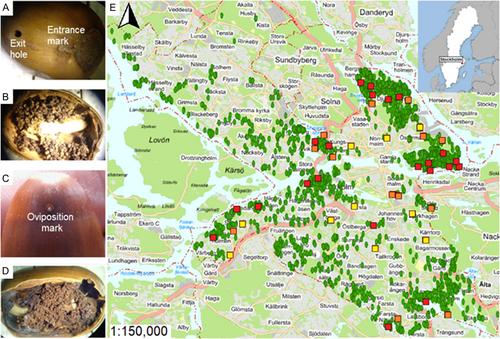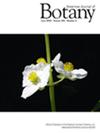During the last centuries, the area covered by urban landscapes is increasing all over the world. Urbanization can change local habitats and decrease connectivity among these habitats, with important consequences for species interactions. While several studies have found a major imprint of urbanization on plant–insect interactions, the effects of urbanization on seed predation remain largely unexplored.
We investigated the relative impact of sunlight exposure, leaf litter, and spatial connectivity on predation by moth and weevil larvae on acorns of the pedunculate oak across an urban landscape during 2018 and 2020. We also examined whether infestations by moths and weevils were independent of each other.
While seed predation varied strongly among trees, seed predation was not related to differences in sunlight exposure, leaf litter, or spatial connectivity. Seed predation by moths and weevils was negatively correlated at the level of individual acorns in 2018, but positively correlated at the acorn and the tree level in 2020.
Our study sets the baseline expectation that urban seed predators are unaffected by differences in sunlight exposure, leaf litter, and spatial connectivity. Overall, our findings suggest that the impact of local and spatial factors on insects within an urban context may depend on the species guild. Understanding the impact of local and spatial factors on biodiversity, food web structure, and ecosystem functioning can provide valuable insights for urban planning and management strategies aimed at promoting urban insect diversity.



